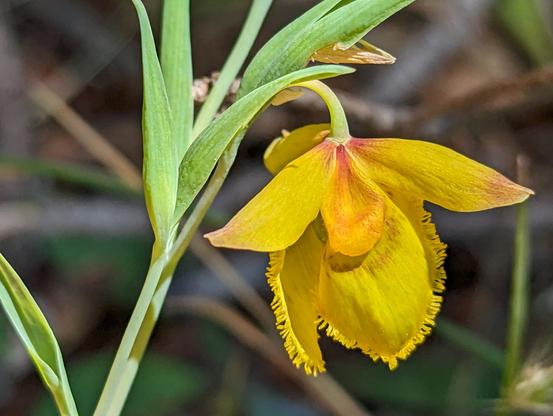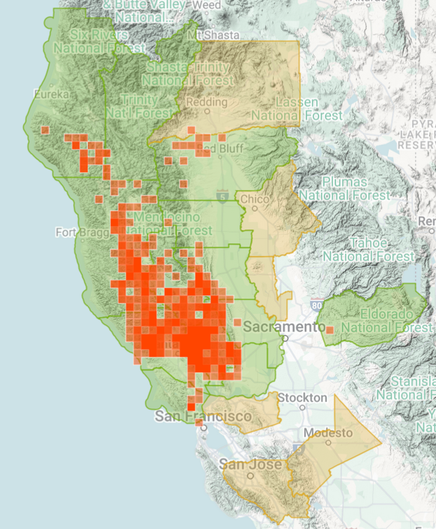Diogenes' Lantern (Calochortus amabilis) at Camp Royeneh near Cazadero, California.
Like most other fairy lanterns (Calochortus), this plant spends most of the year as a dormant bulb. Late winter rains cause it to grow a few grasslike leaves during early spring, which wither and are replaced by lovely yellow flowers in late spring. They generally bloom in late April and early May. By june they usually develop seed pods which drop seeds late in the month, and the plant goes back to dormancy the rest of the year.
Fairy lanterns grow all over the state, with at least 48 species represented. They have historically been used as food, managed by indigenous agriculture.
This species is endemic to the North Coast Ranges.
#CaliforniaNativePlants #Nativeplants #PlantsoftheBayArea #PlantsofSonomaCounty #WildlifePhotography #PlantPhotography #Mosstodon #bloomscrolling #wildflowers #SonomaCounty #SonomaCountyBotany #Cazadero #CampRoyaneh #Calochortusamabilis
#Calochortus #DiogenesLantern
#FairyLantern #NorCalBotany



